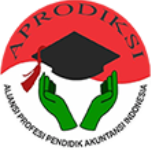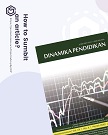The Development of Lectora Inspire-Based Interactive Learning on General Administration Subject
(1) Sebelas Maret University
(2) Sebelas Maret University
(3) Sebelas Maret University
Abstract
This study was a research and development type. The media developed was a lectora inspire-based interactive learning media in general administration subject. The procedure of research and development employed nine out of ten steps of Borg & Gall’s research and development (1989). Data analysis was carried out using descriptive qualitative and quantitative analyses with t-test. Considering the result of analysis on the effectiveness of lectora inspire-based interactive learning media with t-test formula, it could be found that t-statistic value obtained in posttest of experiment and control class was 5.747, with ttable of 2.000172; thus tstatitic > ttable meaning that the improvement of learning outcome in experiment class was better than that in control class. The learning outcome of experiment class showed the mean post-test of 84.53, while that of control class showed the mean posttest of 71.73. The conclusion of research was that Lectora Inspire-based interactive learning media was feasible and was used effectively to improve the students’ learning outcome. It was based on the result of t-test suggesting the significance value (0.000<0.05), indicating that there is a difference of learning outcome between experiment class and control class
Keywords
Full Text:
PDFReferences
Arikunto, S. (2013). Prosedur Penelitian Suatu Pendekatan Praktik. Jakarta: Rineka Cipta.
Aunurrahman. (2009). Belajar dan Pembelajaran. Bandung : Alfabeta
Borg, W.R. and Gall, M. D. (1989). Educational Research An Introduction. New York: Longman
ÇELIK, Serkan. (2012). Development Of Usability Criteria For E-Learning Content Development Software. Turkish Online Journal Of Distance Education, Vol 13 (2) Article 20, Hal. 336-345
Fui-Theng & Mai. (2014). Interactive Multimedia Learning: Innovating Classroom Education In A Malaysian University. The Turkish Online Journal of Educational Technology, Vol 13, No. 2, pp. 99-110
Hamzah, B. U. (2011). Teori Motivasi dan pengukurannya: Analis di bidang pendidikan. Jakarta: Bumi Aksara
Kementerian Pendidikan dan Kebudayaan. (2017). Tahun 2018 Seluruh Sekolah Diharapkan Terapkan Kurikulum 2013 retrieved from https://www.kemdikbud.go.id/main/
Kumar, J.A., Muniandy, B., Yahaya, W.A.J.W. (2016). Emotional Design in Multimedia: Does Gender and Academic Achievement Influence Learning Outcomes?. Malaysian Online Journal of Educational Technology, 4 (3), 37-50
Machumu, H.J., Zhu, C., Sesabo, J. (2016). Blended Learning in the Vocational Education and Training System in Tanzania: Understanding Vocational Educators' Perceptions. International Journal of Multicultural and Multireligious Understanding, 3(2), 30-45
Naz, A.A & Akbar, R.A. (2008). Use of Media for Effective Instruction its Importance: Some Consideration. Journal of Elementary Education, Vol. 18 No. 1-2, pp. 35-40
Sugiyono. (2012). Metode Penelitian Kuantitatif, Kualitatif, dan R&B. Bandung: Alfabeta.
Sugiyono. (2016). Metode Penelitian & Pengembangan. Bandung: Alfabeta
Trianto. (2009). Mendesain Model Pembelajaran Inovatif-Progresif. Jakarta: Kencana Prenada Group
Zhang, Dongsong. (2005). Interactive Multimedia-Based E-Learning: A Study of Effectiveness. The American Journal Of Distance Education, 19 (3), 149-162
Refbacks
- There are currently no refbacks.

This work is licensed under a Creative Commons Attribution 4.0 International License.

.png)

.png)





